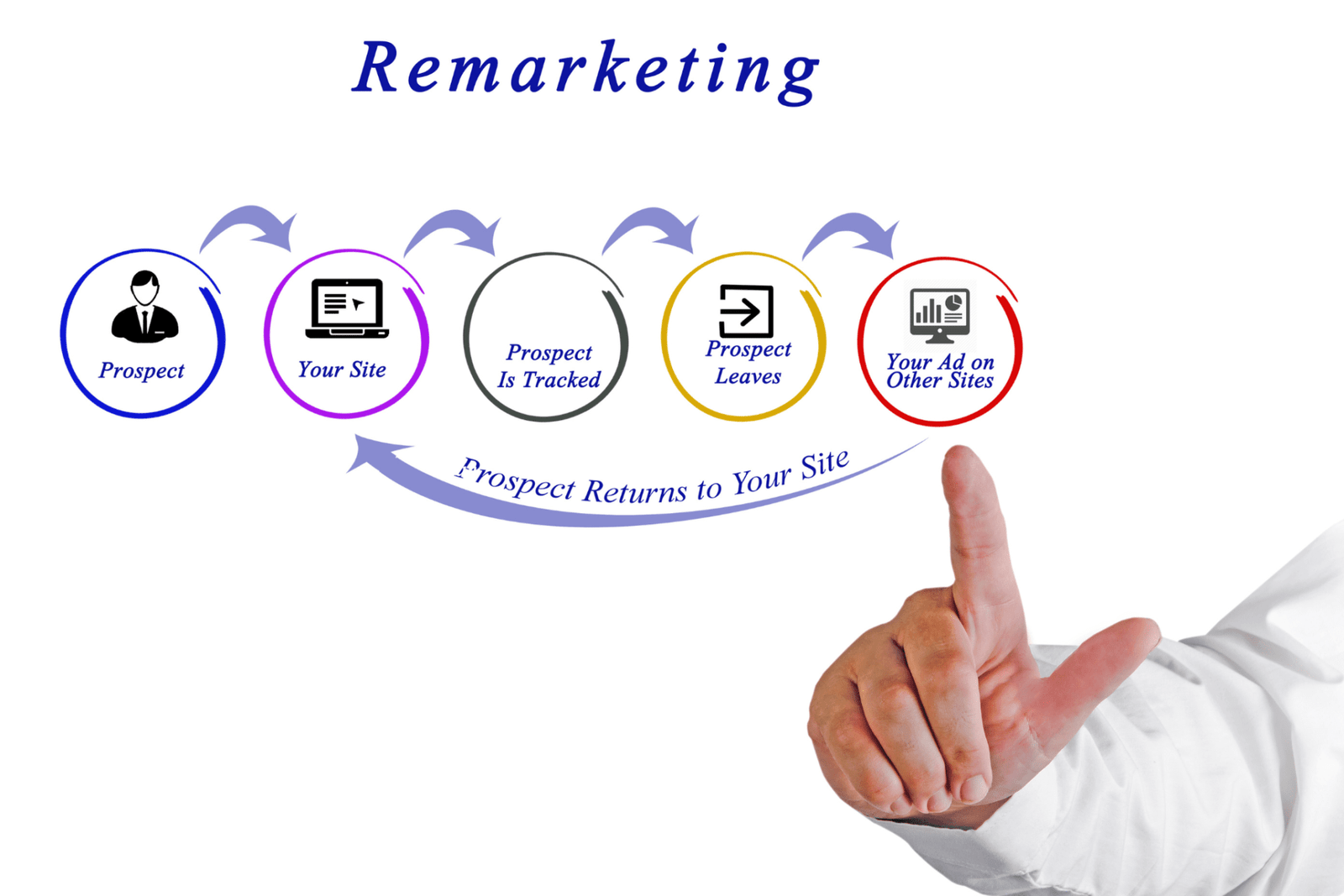When it comes to digital marketing, you might have heard the terms “retargeting” and “remarketing” tossed around. These strategies can significantly boost your marketing efforts, but what exactly are they? Let’s dive into the basics and understand how they work.
Real Questions and Worries
Before we get into the details, let’s address some common questions:
- “What is retargeting?”
- “What is remarketing?”
- “How do these strategies benefit my business?”
These are all valid concerns, and by the end of this guide, you’ll have a clear understanding of retargeting and remarketing, and how to use them effectively.
What is Retargeting?
Retargeting is a digital marketing strategy that targets users who have previously visited your website or interacted with your brand but didn’t complete a desired action, like making a purchase. It uses cookies to track visitors and then displays your ads to them as they browse other websites.
Keyword: retargeting
What is Remarketing?
Remarketing is similar to retargeting but typically refers to re-engaging customers through email. Remarketing involves collecting customer data and sending personalized emails to users who have shown interest in your products or services but haven’t converted yet.
Keyword: remarketing
How Do Retargeting and Remarketing Work?
Retargeting
- Tracking Visitors: When someone visits your website, a small piece of code (a pixel) is placed in their browser. This code tracks their activity on your site.
- Creating Audiences: Based on their behavior (e.g., visiting a product page, adding items to the cart), visitors are grouped into specific audiences.
- Displaying Ads: As these visitors browse other websites, they see your ads, reminding them of your products or services and encouraging them to return to your site.
Remarketing
- Collecting Data: When users visit your website and provide their email addresses (e.g., by signing up for a newsletter or abandoning a cart), their information is collected.
- Segmenting Lists: These users are segmented into different lists based on their actions and interests.
- Sending Emails: Personalized emails are sent to these users, offering special deals, reminding them of abandoned carts, or showcasing products they viewed.
Benefits of Retargeting and Remarketing
Increased Conversions
Retargeting and remarketing help you reconnect with potential customers who have already shown interest in your brand, increasing the likelihood of conversion.
Improved Brand Recall
By consistently appearing in front of your audience, you reinforce your brand’s presence, making it more likely that they will remember you when ready to purchase.
Cost-Effective Marketing
Since you’re targeting users who are already familiar with your brand, retargeting and remarketing often have higher conversion rates and lower costs compared to other advertising methods.
Personalized Engagement
Both strategies allow you to create personalized messages that resonate with your audience’s interests and behaviors, leading to better engagement and customer satisfaction.
Key Components of Retargeting and Remarketing
Retargeting
1. Retargeting Platforms
Several platforms can help you run retargeting campaigns:
- Google Ads: Display ads across the Google Display Network.
- Facebook Ads: Show ads to users on Facebook, Instagram, and partner websites.
- AdRoll: A dedicated retargeting platform that integrates with multiple ad networks.
2. Types of Retargeting
- Site Retargeting: Target users who visited your website.
- Search Retargeting: Target users based on their search queries.
- Social Media Retargeting: Target users who interacted with your social media profiles or posts.
- Email Retargeting: Show ads to users who opened your emails but didn’t convert.
Remarketing
1. Email Lists
Collect email addresses through:
- Newsletter Sign-Ups: Encourage visitors to subscribe to your newsletter.
- Abandoned Cart Forms: Capture emails during the checkout process.
- Loyalty Programs: Offer exclusive deals to members.
2. Email Campaigns
Types of remarketing emails:
- Abandoned Cart Emails: Remind users of items left in their cart.
- Product Recommendation Emails: Suggest products based on past behavior.
- Re-Engagement Emails: Reach out to inactive subscribers with special offers.
Getting Started with Retargeting and Remarketing
Define Your Goals
Determine what you want to achieve with your retargeting and remarketing campaigns. Common goals include:
- Increasing Conversions: Turning interested visitors into customers.
- Boosting Engagement: Encouraging repeat visits and interactions.
- Reducing Cart Abandonment: Bringing back users who left without completing a purchase.
Set Up Tracking
Implement tracking codes on your website to collect data on visitor behavior. For retargeting, this involves adding pixels from your chosen ad platforms. For remarketing, ensure you have systems in place to collect and segment email addresses.
Create Compelling Ads and Emails
Design ads and emails that are visually appealing and have a clear call-to-action (CTA). Ensure your messages are personalized and relevant to the recipient’s interests and behavior.
Monitor and Optimize
Use analytics tools to track the performance of your campaigns. Monitor key metrics like click-through rates (CTR), conversion rates, and return on investment (ROI). Adjust your strategies based on this data to improve results.
Stories and Examples
The Online Retailer Example
Imagine you run an online retail store. Here’s how you might use retargeting and remarketing:
- Goal: Increase sales and reduce cart abandonment.
- Retargeting: Use Google Ads to display ads to users who viewed product pages but didn’t purchase. Highlight special offers or new arrivals.
- Remarketing: Send abandoned cart emails to remind users of the items they left behind. Offer a discount to encourage them to complete the purchase.
- Monitor: Track conversion rates from retargeting ads and email open rates and click-through rates from remarketing campaigns. Optimize based on performance data.
The Local Gym Example
Or let’s say you own a local gym:
- Goal: Increase membership sign-ups.
- Retargeting: Use Facebook Ads to target users who visited the membership page on your website but didn’t sign up. Highlight member benefits and success stories.
- Remarketing: Send follow-up emails to users who expressed interest in a trial membership but didn’t sign up. Include testimonials and a limited-time offer.
- Monitor: Track sign-ups from retargeting ads and email engagement metrics. Adjust ad creatives and email content based on results.
FAQs about Retargeting and Remarketing
1. What’s the difference between retargeting and remarketing?
Retargeting typically refers to displaying ads to users who have visited your website but didn’t convert. Remarketing generally involves sending personalized emails to re-engage users who have interacted with your brand.
2. How long should I run retargeting and remarketing campaigns?
It depends on your goals and audience behavior. Start with a few weeks and adjust based on performance. Continuous monitoring and optimization are key.
3. Can I use both strategies together?
Yes, combining retargeting and remarketing can be highly effective. Use retargeting ads to remind users of your brand as they browse the web and follow up with personalized emails to drive conversions.
4. How do I measure the success of my campaigns?
Use analytics tools to track key metrics like impressions, clicks, conversions, email open rates, and click-through rates. Regularly review this data to optimize your campaigns.
Wrapping It Up
Retargeting and remarketing are powerful strategies to re-engage potential customers and drive conversions. By understanding the basics and implementing these strategies effectively, you can boost your marketing efforts and achieve your business goals.
Remember, the key to successful retargeting and remarketing is to start with clear goals, set up proper tracking, create compelling ads and emails, and continually monitor and optimize your campaigns. Happy marketing!

